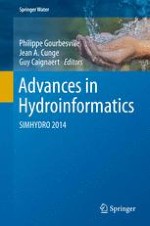2016 | OriginalPaper | Buchkapitel
Large Eddy Simulation of Cavitating Throttle Flow
verfasst von : Wilfried Edelbauer, Jure Strucl, Alexander Morozov
Erschienen in: Advances in Hydroinformatics
Verlag: Springer Singapore
Aktivieren Sie unsere intelligente Suche, um passende Fachinhalte oder Patente zu finden.
Wählen Sie Textabschnitte aus um mit Künstlicher Intelligenz passenden Patente zu finden. powered by
Markieren Sie Textabschnitte, um KI-gestützt weitere passende Inhalte zu finden. powered by
